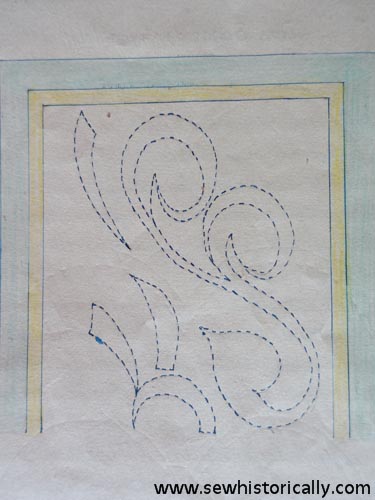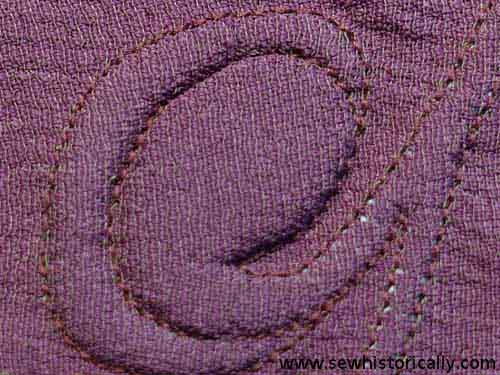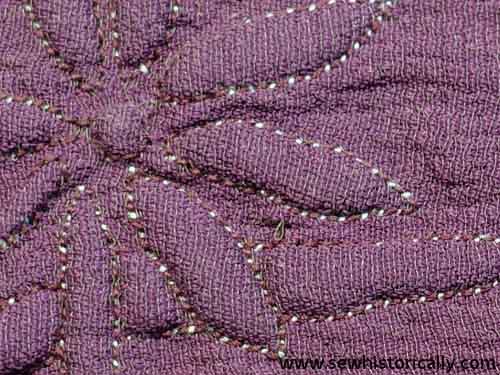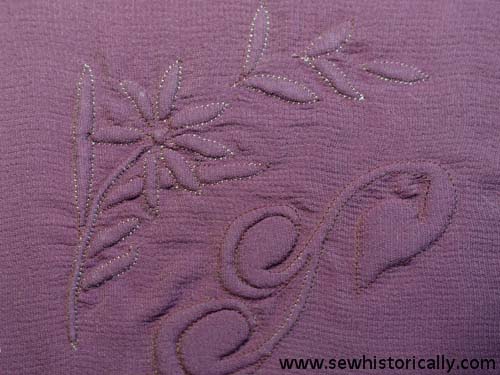Trapunto is stuffed quilting: Shapes, such as flowers and scrolls, are stuffed with cotton, wool, or polyester stuffing between two layers of fabric. It’s then sewn around the shapes to ceate a beautiful, raised 3D effect. This trapunto sampler was made in 1950 for a plain colored wool dress.
The sampler features a flower with leaves and a scroll design.

1950 instruction about how to make trapunto: Mark the place with basting stitches on the wool dress, then take one side seam of the bodice apart again. Place the backing fabric, such as batiste, on the wrong side of the wool fabric, and the paper pattern on the right side. Sew along the design with tiny basting stitches. Now stitch along the lines of the shapes with the sewing machine. After stitching, rip out the paper pattern. To make the trapunto, snip two threads of the backing fabric and stuff the shapes with cotton wool using a darning needle or small scissor. Then close the holes with cross stitches. Use another backing fabric to finish the wrong side of the stuffed quilting.

The shapes are stuffed tightly, so they’re hard to the touch.

The backing fabric is attached at the corners and around the stuffed shapes.

But no stitches are visible at the wrong side of the stuffed quilting because there are two layers of backing fabric which are neatly finished so that no raw edges show.

Here you’ll find part 10 and part 12 of the 1950s embroidery and sewing series.


